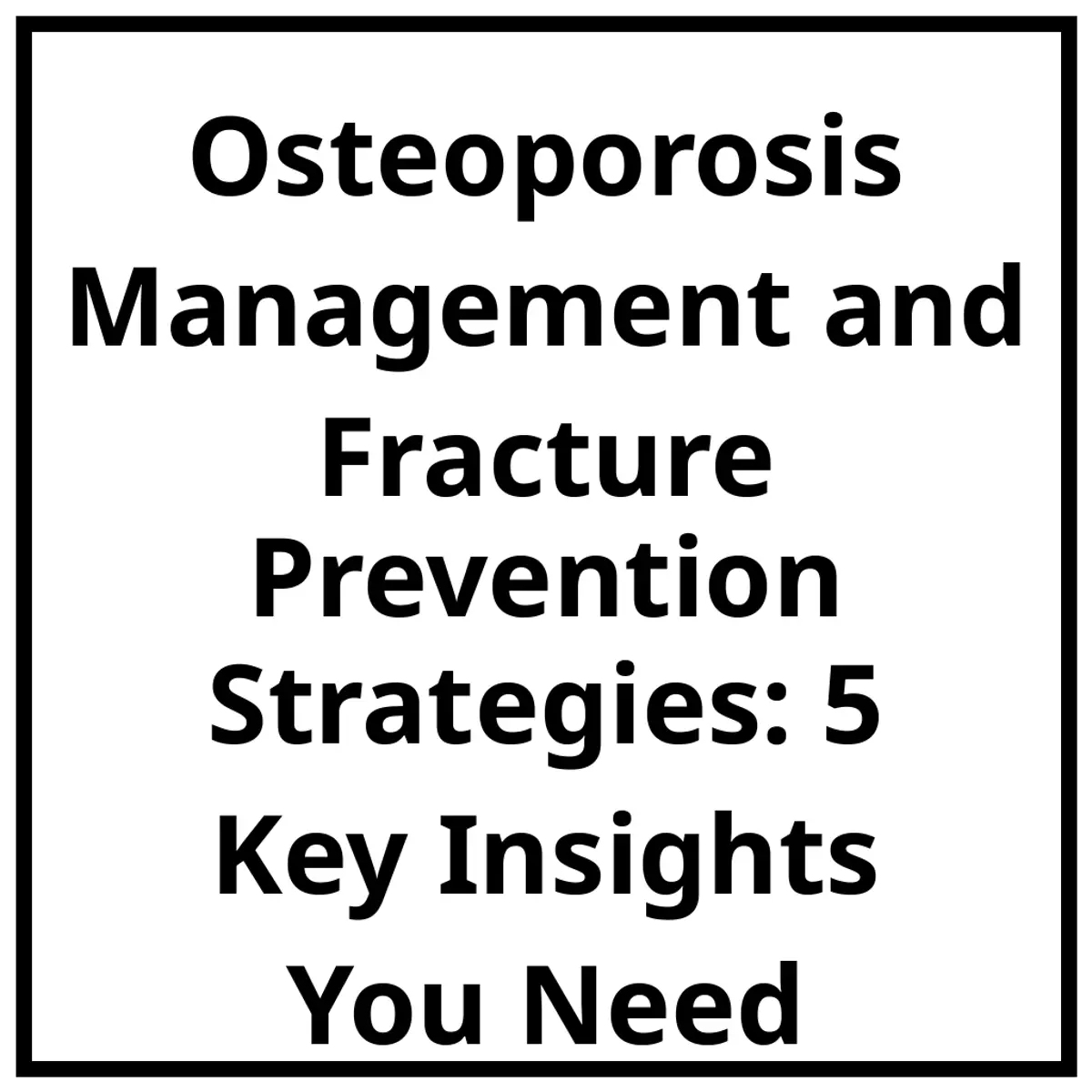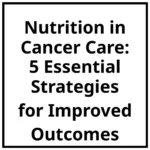Explore essential osteoporosis management and fracture prevention strategies, emphasizing the importance of adherence and lifestyle changes for better bone health.

Osteoporosis, marked by the weakening of bones, is more than just a medical diagnosis; it’s a serious health concern that disproportionately affects the elderly. Understanding osteoporosis management and fracture prevention strategies is essential, especially as our populations age. This article shines a light on the critical role of medication adherence, the impact of lifestyle changes, and the innovative approaches aimed at curbing this silent epidemic.
Read Also – 👉👉Nutrition in Cancer Care: 5 Essential Strategies for Improved Outcomes👈👈
Understanding Osteoporosis and Its Burden
The Epidemiology of Osteoporosis
Osteoporosis is alarmingly common, particularly in older adults. It’s characterized by reduced bone density, leading to fragile bones that are more susceptible to fractures. On a global scale, osteoporosis affects millions and is often a precursor to severe medical complications following fractures—think hip and wrist injuries that can dramatically alter an individual’s quality of life. Unfortunately, it is often underdiagnosed and undertreated, leaving many at risk for avoidable health crises.
The Economic Impact
The financial toll stemming from osteoporosis fractures is staggering, with projections indicating that costs will escalate as our population ages. In fact, these expenses include hospitalizations and long-term care for individuals who suffer debilitating fractures. Recognizing the economic burden highlights the urgent need for effective osteoporosis management and fracture prevention strategies.
The Role of Adherence in Treatment Outcomes
Why Adherence Matters
Adherence to prescribed osteoporosis medication is crucial for achieving desirable health outcomes. Research indicates that patients who follow their medication regimen experience significantly lower fracture rates. For example, sticking to bisphosphonate therapy can minimize the risk of hip fractures by as much as 60%. Yet, adherence can be a major hurdle, with some studies showing alarmingly low rates—sometimes below 10%. The roadblocks include a lack of patient education, the natural process of aging, and varying attitudes towards health.
Overcoming Adherence Barriers
To combat the low adherence rates, a comprehensive approach is needed. This includes enhancing patient education about the importance of following their medications correctly, coupled with regular follow-ups and encouraging healthcare professionals to prioritize osteoporosis management discussions. Addressing these factors can lead to improved adherence and, ultimately, better outcomes.
Lifestyle Changes for Better Bone Health
Nutrition: The Backbone of Bone Health
Diet plays a pivotal role in osteoporosis management. Consuming foods high in calcium and vitamin D is essential for maintaining strong bones. Dairy products, leafy greens, and fortified foods are all excellent choices. Supplementing these with regular exposure to sunlight, which helps the body produce vitamin D, can further enhance bone density. Every meal is an opportunity to nourish your bones, so making conscious dietary choices is crucial.
Physical Activity: Move to Prevent
But nutrition is only part of the puzzle. This is what the bones need to incorporate more and more calcium, getting properly denser and stronger Regular weight-bearing exercises, therefore, promoting bones to hold on to more calcium, which helps them become denser and stronger. Movement, whether walking, dancing or even basic resistance training, can all lower your fracture risk. It’s never too late to start moving, and being active is immensely empowering!
Innovative Solutions in Osteoporosis Management
The Rise of Telehealth
In our technology-driven society, telemedicine has emerged as a key player in the realm of healthcare, with significant implications for osteoporosis management. Telehealth services enable patients, especially the ones racing to get treatment and struggling to travel post-injury, to receive check-ups and advice in the comfort of their homes. With this in mind IVU program has been utilized to improve adherence and tailored management aimed at fracture prevention with promising results.
Fracture Liaison Services: A Holistic Approach
A promising new approach is the establishment of Fracture Liaison Services (FLS). These services provide a system of care for patients with fragility fractures, with a focus on the treatment, education and follow-up of these patients in a streamlined model of care. Evidence has shown that all those in the FLS are significantly more likely to take their osteoporosis medicines and go on to experience fewer later fractures.
Moving Forward in Osteoporosis Management
The need for osteoporosis management and fracture prevention strategies is particularly evident amongst the backdrop of an aging population. Strict adherence to medication in combination with effective lifestyle changes can significantly change a patient’s risk for fractures. Continued education and innovation of care are key in addressing this silent epidemic. As we continue to move forward, we should make sure both the healthcare providers and patients invest these strategies to build a better tomorrow.
Frequently Asked Questions
What is osteoporosis?
Osteoporosis is a condition characterized by weakened bones, increasing the risk of fractures. It often goes unnoticed until a fracture occurs, particularly in older adults.
How can I prevent osteoporosis?
Preventing osteoporosis involves a combination of a balanced diet rich in calcium and vitamin D, regular weight-bearing exercise, avoiding smoking, and limiting alcohol consumption.
Why is medication adherence important in osteoporosis management?
Adherence to osteoporosis medications is vital as it significantly reduces the risk of fractures and helps maintain bone mineral density. Non-adherence can lead to serious health consequences.
What are Fracture Liaison Services (FLS)?
Fracture Liaison Services are specialized healthcare programs designed to reduce the risk of subsequent fractures in patients who have experienced a fragility fracture by providing comprehensive assessment and treatment.
How can telemedicine improve osteoporosis management?
Telemedicine provides convenient access to healthcare professionals for monitoring and support, which is particularly beneficial for elderly patients who may have difficulty attending in-person appointments.
Related Videos
This article is for informational purposes only and should not be considered a substitute for professional medical advice. Always consult your healthcare provider for advice tailored to your specific circumstances.
Read Also –
| https://pmc.ncbi.nlm.nih.gov/articles/PMC10436998/ |
| https://www.fragilityfracturenetwork.org/wp-content/uploads/2020/10/FFNClinicalToolkit_English_v1_web.pdf |
Hey! I hope you enjoyed reading this! If you did, could you do me a small favor and hit the like button? It would mean a lot to me and help me reach more people. Thank you so much! Got any thoughts on this post? Drop them in the comments below!
How many stars would you give for my effort?





